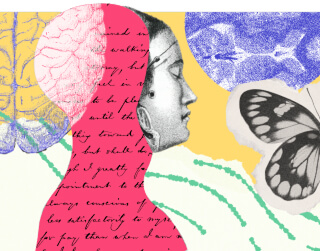Rohini Nilekani and Uttarakhand Chief Secretary Shatrughan Singh at a workshop on ‘Reviving springs in Uttarakhand’ organised by the Peoples Science Institute in Dehradun on Wednesday.
“Drinking water shortage will become grave in Uttarakhand especially in the rural mountain areas due to climate change,” said Shatrughan Singh, while speaking at a workshop on “Reviving Springs in Uttarakhand” organised by People’s Science Institute, Dehradun, with the financial support of Arghyam, Bengaluru, here today.
Type: Article
Revitalise our aquifers: India can be water secure, but for that we need to act urgently
This parched country will be blessed with rain soon. It is the final but worst stretch of the hot, dry summer. A good time to commit that, post monsoon, we will never forget one of the most widespread droughts in recent memory. Three years running, many states have declared drought conditions. A normal monsoon may come soon. But what about the following years? Climate scientists warn us of severe variability. India may be water stressed as early as 2025.
Arghyam : Annual Report : 2015-16
Message from Chairperson.
Arghyam over the past year witnessed a series of developments in the ecosystem. We are witness to water becoming an issue of conflict as the demand has risen exponentially due to competing users amidst increasingly erratic rainfall patterns. Missing data and weak institutions have compounded the problems around water further.
The 25 Most Powerful Women in Indian Business
While her husband sells Brand India Abroad, ROHINI Improves things at the Grassroots.
The Journalist-turned-novelist-turned-philanthropist has been spending personal money and time on causes close ot her heart.
Azim Premji tops India philanthropy listing: Hurun
Premji contributed about 80% of the total donations made by 36 Indian philanthropists who together gave away nearly Rs.35,000 crore. Wipro Ltd chairman Azim Hashim Premji, unsurprisingly, was ranked the most generous Indian for the third year in a row on the Hurun India Philanthropy List 2015 released on Friday.
Infosys Ltd’s co-founder Nandan Nilekani and his wife Rohini Nilekani donated Rs.2,404 crore, primarily towards the causes of urban governance, public policy and education, making them the second most generous.
Philanthropy: It’s about giving everyone a chance
Two couples tell us giving decisions are about taking risks and proactively formulating a strategy. We have met inspiring philanthropists—whether it’s Arghyam chairperson Rohini Nilekani’s passion for the cause of sanitation or musician and author Peter Buffett’s vision based on his father’s philosophy.
Invisible water, visible crisis
By now, everyone in India understands that we have a serious water crisis. Too many of our rivers are polluted, dammed, or dying. Rainfall is becoming increasingly erratic, and expected to become more so. Our groundwater is depleting fast. Our lakes are drying up or filling with sewage, especially in urban centres. Our water and sanitation infrastructure is old and creaking in many places and does not even exist in others. Agriculture, industry and urban settlements all compete for the same scarce resource. It is no longer a problem that can be discussed without remedy. Rich or poor, it affects us all, here and now.
By now, everyone in India understands that we have a serious water crisis. Too many of our rivers are polluted, dammed, or dying. Rainfall is becoming increasingly erratic, and expected to become more so. Our groundwater is depleting fast. Our lakes are drying up or filling with sewage, especially in urban centres. Our water and sanitation infrastructure is old and creaking in many places and does not even exist in others. Agriculture, industry and urban settlements all compete for the same scarce resource. It is no longer a problem that can be discussed without remedy. Rich or poor, it affects us all, here and now. But if we had to choose one area for immediate attention, it would have to be groundwater. Groundwater is fuelling much of India’s growth in rural and urban areas. This has resulted in severe scarcity and quality issues, especially in these high growth areas (see map). India has always been a groundwater civilisation. For thousands of years, different regions had the most aesthetically designed, functional open wells that tapped into the shallow aquifers. People had thumb rules that allowed them to use the water sustainably across cycles of good monsoons and drought. The coming of the deep rigs and the borewells in the 1970s completely changed the way India used its groundwater reserves. The most significant indicator is that the share of groundwater for irrigation went up from a mere 1 per cent during 196061 to 60 per cent during 200607. India is now the largest user of groundwater in the world. We draw more groundwater than two giant economies USA and China. We have approximately 30 million wells, including the new borewells and the old open wells, drawing 250 cubic km of water. Groundwater now contributes to about 85 per cent of India’s drinking water security, 60 per cent of its agricultural requirements and 50 per cent of urban water needs.
The big irony is that despite this reality, much of India’s public investments have gone into surface water dams and canals for irrigation, huge pipelines for drinking water, and increasingly for diversion to industry especially to the energy sector. Essentially, groundwater extraction is a private enterprise in India. Most Indian wells and borewells are privately owned and operated. Overwhelmed by the arrival of a new technology that allowed rapid scaleup, the government’s response has been slow. There is little and haphazard regulation of groundwater. This is a rare phenomenon in the world. Many countries have delinked land ownership from the ownership of the water beneath, and have complex systems of water rights, pricing and tight regulation. Water is a state subject in India. Administration at the Centre as well as in the states has tried but failed to fully resolve the questions of who really owns the groundwater, how it should be mapped, extracted and replenished. So, through ignorance and with impunity, farmers, governments, industry and ordinary citizens have drilled deeper, and just about anywhere with frightening results. Sixty per cent of India’s districts have serious issues of either depletion or pollution, according to one study. Excoriating the earth has unleashed geogenic chemicals such as fluoride and arsenic into our drinking water. Since authentic quality testing is difficult in most places, we do not yet know what we are doing and what awaits us. According to a study by Jadavpur University, Kolkata, 66 million people are at risk from fluorosis and as many as 500 million from arsenic induced health issues in the Ganga Meghna Brahmaputra plain. At the same time, poor sanitary practices have led to faecal contamination. Millions defecate in the open, and millions of others unknowingly contaminate groundwater through leaching from toilet pits. A WaterAid report suggests this directly affects around 37 million Indians annually through waterborne diseases. If you like that sort of imagery, it evokes a manthan gone horribly wrong. It is imperative to look at what must be done, and done quickly. What are the top five things that the government, civil society organisations and citizens can do to make our groundwater civilisation more sustainable? Make the groundwater Mapping visible Right now, there is an asymmetry of information. We need to change that by putting aquifer data in the public domain. Make invisible groundwater visible to all, so that people can prevent abuse. The government has an aquifer mapping programme. But it needs strengthening and realignment.
It is a topdown approach. It need not be. People need granular data to be waterwise. Aquifers can be mapped within five years with smart, crowdsourced, groundup information, in combination with technologies such as satellite data. Manage the demand It is linked to the first point, and reminds us that a supply side approach will not work. We need to use water more efficiently, and need better market signals for that. Groundwater in India is a private and under regulated market, and does not have the benefits that transparent, embedded markets can bring. There is also a deep nexus between groundwater and energy. If we will not price the water, we have to price the energy. Appropriate economic incentives must come sooner rather than later. There may be less resistance than the political class fears, and there are some good examples in the country already, such as the Jyotigram in Gujarat. Rationalise groundwater use This is linked to the points above. It is not good economics or good environmental stewardship to drain the aquifers of Punjab to grow rice, nor those of arid Kutch to grow sugarcane. These are no longer questions that economists can leisurely mull over. We have to incentivise the shift in production from water scarce to watersurplus aquifers, but in a sustainable way. Let’s shift public resources from surface water budgets if necessary to achieve a better water balance. Enable civil society participation It will be very difficult for the government to retrofit a sensible governance system on the current model of private, dispersed and democratised access to groundwater. NGOs do a better job of engaging people in a participatory approach, by encouraging stewardship rather than exploitation. Good public policy and laws help, but we truly need new behavioural responses that allow us to respect water. Recharge and reuse We need a massive national effort to recharge our aquifers. This requires the creation of appropriate institutions that allow us, as a society, to frame a new relationship with groundwater. Some institutional frameworks have been attempted, such as the Central Ground Water Board, with its mirrors in the states. But we need to repair and innovate these institutions. It is critical to set up new entities that help understand and manage urban groundwater better. As a society, we are now faced with tough choices. It is worth betting big on groundwater, which can actually lead us to water security. And we can become a mature groundwater civilisation. Again.
With Ayan Biswas and Arghyam
CSOs: Mirrors, not just handmaidens
When a government limits the freedom of NGOs to criticize, as seems to be happening now, it prevents them from doing what it needs them to do. The world over, it is understood that civil society organizations (CSOs) provide checks and balances to counter the unbridled power of the state and any abuse of that power.
Rohini Nilekani | Want to make a difference? Then initiate it.
Good governance, no matter how you define it, is about more than govt and its institutions. Its about citizens investing and engaging in transformation process.
Forbes India PHILANTHROPY AWARDS 2014
THE CAUSE AND THE EFFECT: Celebrating the best of philanthropy in India. These are the winners of the Forbes India Philanthropy Awards 2014, chosen by our eminent jury comprising Narayanan Vaghul (jury chair and former chairman of ICICI Bank), MV Subbiah (former executive chairman, Murugappa Group), Jayant Sinha (currently minister of state for finance) and Rohini Nilekani (founder-chairperson, Arghyam).


